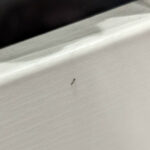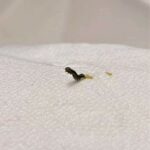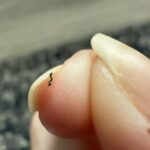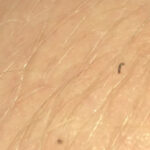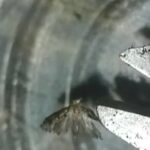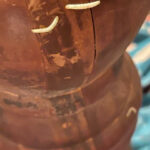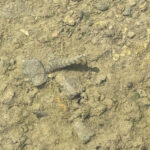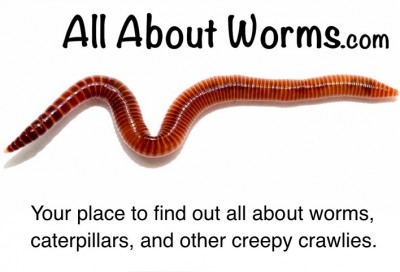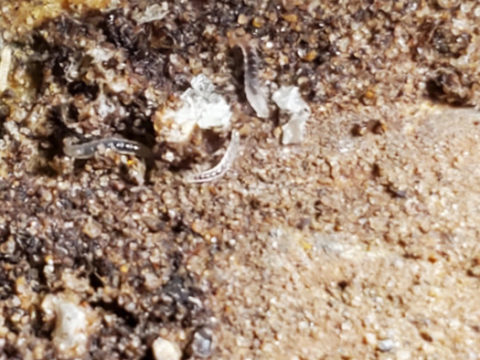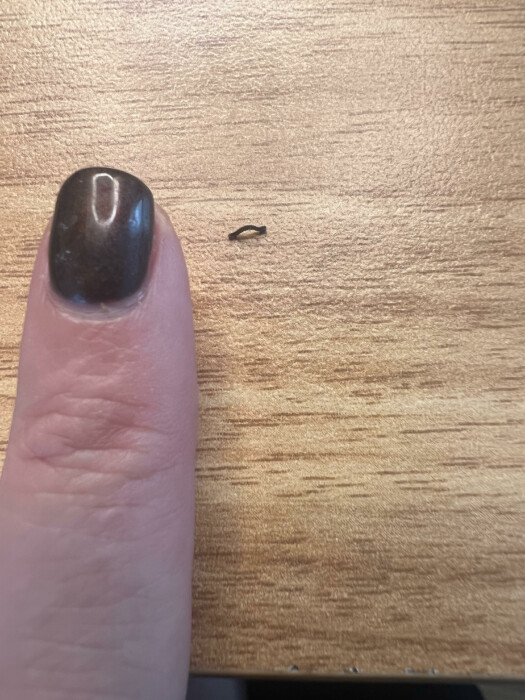
“What is this guy?” is all Brooke asks in her submission regarding the black, worm-like creature pictured below. It has an arched back and bulbous head, which tells us that this is an inchworm. Usually it is much harder to identify organisms without more context, or without a clearer photo, but the shape of this creature is so specific to inchworms that we knew it had to be one. Inchworms have legs at the front and back of their body, which forces them to curve their back in this way as they ‘inch’ their way forward.
Inchworms are actually caterpillars, not worms. They are the larvae of a group of North American moth species, all whose caterpillars share this physical trait. Of course, since this group covers thousands of species, it is impossible for us to give super specific information without knowing the exact species, but equally, it is difficult to pinpoint the exact species of the inchworm Brooke found because there are so many of them. What we can say is that, generally speaking, inchworms are not harmful to people: as caterpillars go, there are some species that can secrete toxins through their skin which may cause an allergic reaction in some people, so to be safe we recommend that Brooke avoid direct physical contact. But other than that, inchworms do not bite or sting, and they cannot cause serious harm to humans or pets.
With that said, inchworms can be harmful to plants. Like most species of caterpillars they love to munch on vegetation, and when they come in large droves and start eating away, they can cause serious damage to the given plant’s health. They are defoliators, which means that they eat the leaves of plants, and it also means that they are easier to spot than, say, cutworms: a species of caterpillar which chews through the stems of plants underground, making them hard to spot and that much more lethal. If Brooke is worried about the health of the trees in her garden or any of the other plants, the best way to control their populations to a manageable level is to make her area inviting to natural predators. For example, she could install birdhouses in her garden.
In conclusion, Brooke found an inchworm. We do not know the context in which she found it, so it is hard to give tailored advice. If she found it in her home, we recommend just moving it outside. It likely ended up there accidentally, travelling in on Brooke’s shoes or clothing from outside. If she found it in her garden, it may still not be something to be worried about. It just depends on how many of them there are. We hope this helps, and we wish Brooke the best.
All About Worms is always free, always reader-supported. Your tips via CashApp, Venmo, or Paypal are appreciated! Receipts will come from ISIPP Publishing.
You might also find these guys interesting!




